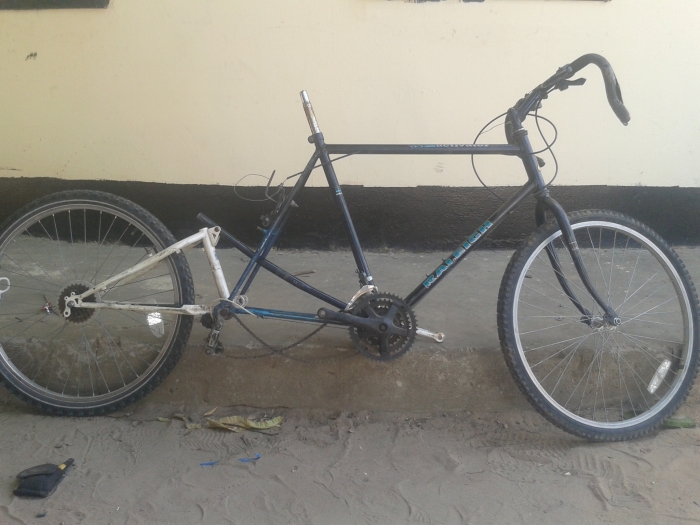This post is part of our volunteering experience at the Wonder Years Centre of Excellence in The Gambia. A great project that brings free education and healthcare to the people of Madina Salam. To find out more about volunteering at this project, click here…

We’ve had them for a decade or more in the UK and USA, longer in Holland, Germany and Scandinavia. Rolling round the urban environment delivering letters, packages, food, sometimes people and occasionally dogs. Often seen as a sign of a developing green consciousness, or sometimes just simple common sense in a conjested world, the cargo bike has found it’s place in our towns and cities.

And it’s not just families and cycle couriers using them. Window cleaners, gardeners, joiners have all joined in with this new low impact, high visibility, cheap and easy transport option. Why pay parking fees, emissions tax, mechanic’s bills when you can avoid all of these headaches and stretch your legs at the same time? Why choke up the planet when you can breath easy?
So, that’s where we’re at in the developed world, but what about elsewhere?
According to Worldbike,
“over a billion people worldwide lack adequate access to transport. Most live in rural areas cut off from markets, clinics and schools.”
They also point out that,
“Rural families with enough money to buy bikes use them the same way we use trucks and school buses. Unfortunately, most bikes that are locally available are ill suited for carrying loads and don’t withstand the harsh conditions of their use. Before long, they break down and require repair (which can be costly) or are abandoned.”
Enter the cargo bike… “a cargo bike – can change the life of someone living in rural poverty by connecting them to markets, schools and clinics.”
This concept was actualised by Project Rwanda who developed the Coffee Bike in 2006, designed by mountain bike pioneer Tom Ritchey and enabling farmers to transport their coffee beans to market.
In The Gambia, the majority of people use bicycles for transport, principally for economic reasons. The bicycle is often used to transport cargo and wide racks are usually welded onto the main frame of the rear triangle. These are strong, but not versatile because of their length. With some informaton from the Instructables website, we decided to build a longtail cargo bike which could be used by the staff at WYCE in day to day working life.
It’s a simple design, using the rear triangle of a damaged full suspension mountain bike, bolted onto the rear dropouts of a standard 26 inch bike. We used an old steel handlebar bolted to the rear triangle and behind the bottom bracket to keep the structure stable enough to be pedalled to a local welder. And he did the rest.
All the connecting points of the two frames were welded for added strength and then he built a cargo rack, long enough to carry two old Royal Mail panniers either side, or to support bulky cargo such as water containers. The rack should also be long enough to lash palms onto. We finished off the bike with a wooden deck for sitting on, handlebars attached to the seatpost for a passenger and a nice retro wicker basket for accessories and a touch of retro chic(!).
The WYCE mechanic Dembo then built a second cargo bike, shown here being transported by the first one back from the welder.






